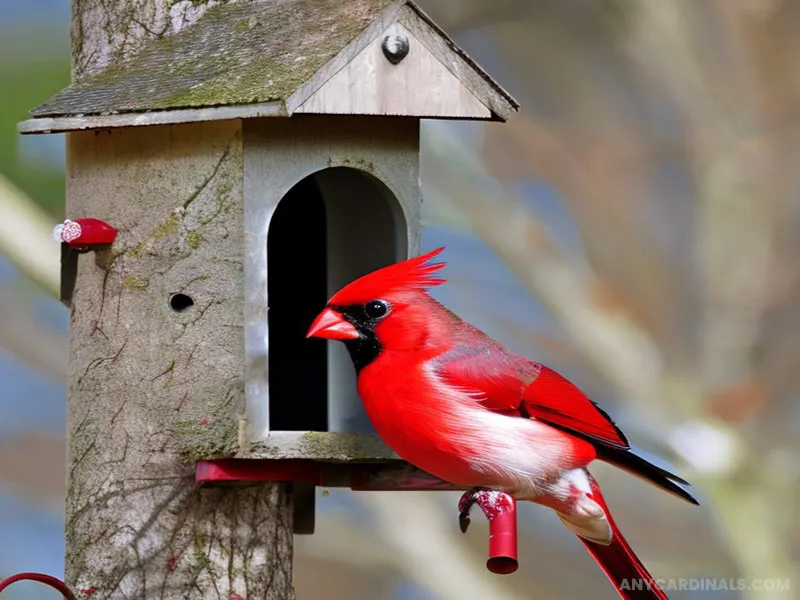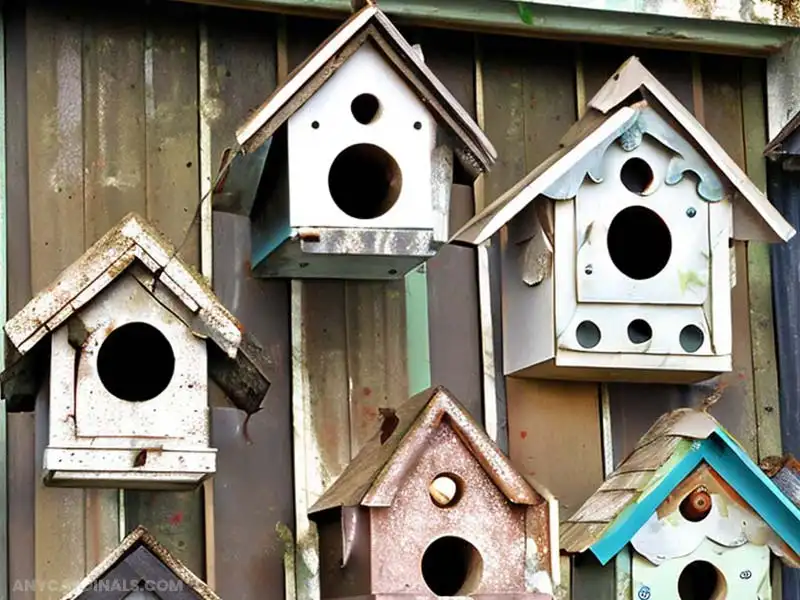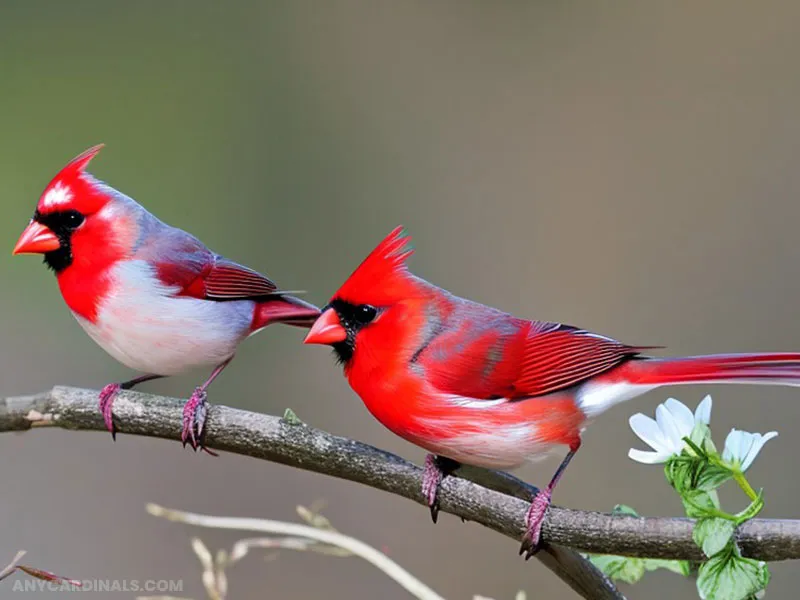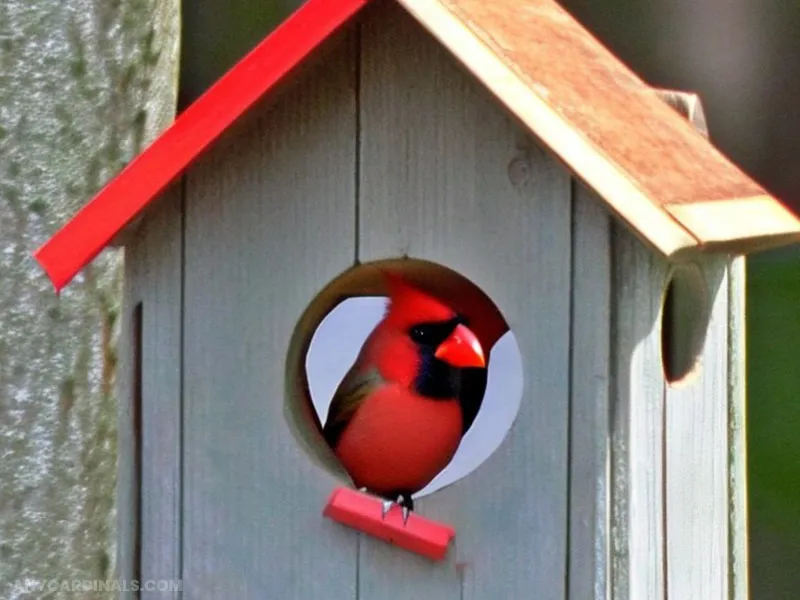Do Cardinals Use Birdhouses? Why They Avoid Them
You may have witnessed finches, sparrows, and other small birds dwelling inside birdhouses, eating their favorite food and singing in high-pitched tones. But have you ever noticed any cardinal in those birdhouses? Do cardinals use birdhouses? What do you think?
No, they don’t use birdhouses or nesting boxes. Instead, cardinals choose areas covered with dense plants as their nesting sites. They are seen to build nests in such places happily.
So, why don’t cardinals use birdhouses like other birdies? Can you really lure those using birdhouses? You may keep reading this blog post to get answers to these questions.
Related blog about cardinals behavior:
Reasons Cardinals Avoid Birdhouses
Various reasons are associated with why cardinals don’t prefer staying in birdhouses like other wild birdies.

Below, we have revealed all the causes to help you comprehend this matter. So, let’s read.
Curious about how cardinals behave? This guide breaks down their nesting, mating, and territorial behavior clearly.
01. Walled Birdhouses:
As you already know, cardinals prefer open areas for nesting rather than enclosed ones. They are open nesters and love constructing cup-shaped nests using grass, bark, fur, twigs, hair, etc.

These astounding bird species build nests on the trees’ branches, in shrubs and bushes, surrounded by vegetation.
But birdhouses don’t offer such facilities to cardinals, so you may hardly find any cardinals building nests in the birdhouses.
Their preference for open nests allows better ventilation and visibility, crucial for thermoregulation and predator detection, as noted by the Cornell Lab of Ornithology.
02. Fewer & Narrower Entrance Gates Than Nests:
Usually, birdhouses come with a few holes for bird entrances. Besides, these holes tend to be relatively narrow, making small songbirds, like cardinals, face trouble getting inside.
And this is one of the prime reasons why cardinals avoid using birdhouses.
Most birdhouse holes are 1.5 inches or smaller, too narrow for cardinals’ 8-9 inch wingspan, limiting access compared to open nests.
03. Doesn’t Allow Monitoring Predators:
Although cardinals have a satisfying lifespan, very few can embrace that gift as they get preyed upon by predators. That’s why cardinals always have to keep an eye on the predators.
But if they start staying in enclosed spaces, they will fail to monitor predators and can’t fend off intruders. So this fact makes the cardinals show no interest in building nests inside birdhouses.
Enclosed spaces reduce their field of vision, making it harder to spot hawks or cats, which are common threats to their nests.
04. Fewer Exit Gates Than Nests:
Most birdhouses you will find on amazon or online feature one or two exit holes, making it challenging for cardinals to get out of the birdhouses hurriedly after encountering any danger.
Apparently, it can be one of the reasons why cardinals choose not to stay in birdhouses. If they do, their survival rate may decrease gradually.
Single-exit designs can trap them during predator attacks, unlike open nests that allow quick escapes in multiple directions.
05. Birdhouses Aren’t Usually Located In Cardinal-Friendly Places:
Many bird watchers prefer installing birdhouses in their backyard free from shrubs and vegetation. Consequently, those houses become less alluring to cardinals, and they hardly give those birdhouses a visit.

Hence, if you want to lure cardinals using the best-quality birdhouses, you can try installing them on tree branches, or anywhere cardinals visit frequently. Who knows, luck may be on your side.
Cardinals prefer nesting 3-15 feet high in dense foliage, which provides camouflage, unlike exposed backyard birdhouses.
06. Can’t Look After Their Families:
If cardinals build nests in the birdhouses and produce offspring, they can’t monitor their families, especially babies. Cardinals tend to patrol their territories while raising broods.
They need to spot their babies all the time and protect them from intruders. That’s why they choose open areas to reside in rather than staying in enclosed places like birdhouses.
Open nests allow both parents to feed and guard chicks efficiently, a behavior less feasible in confined birdhouse spaces.
Why Are There Some Cardinals In My Birdhouses?
Although it’s evident that cardinals avoid using birdhouses, some people still claim to spot cardinals in the birdhouses. So, what does that mean? Do cardinals really use birdhouses?

The short answer is no. People might have seen cardinals perching over birdhouses or staying inside nesting shelves. As nesting shelves are pretty open and feature no roof, cardinals consider these items safe for living.
These nesting shelves don’t offer cardinals the feeling of being enclosed; instead, it gives them the protection they need to thrive in harsh environments.
Nesting shelves mimic natural open nests, providing a platform at 5-10 feet high where cardinals can build secure, accessible nests.
However, if you need recommendations regarding the top-quality nesting shelves for cardinals, you may visit this website.
How To Lure Cardinals Using Nesting Shelves:
- After choosing the best nesting shelves, you can install them in open areas or places covered with vegetation. In short, place those shelves in cardinal-friendly areas.
- Try to set up multiple nesting shelves at least six feet above the ground since it will ensure their safety from predators like raccoons, cats, and more.
- Once cardinals and their families leave nesting shelves, you should clean shelves thoroughly to attract more cardinals to nest there repeatedly.
- Lastly, we recommend watching cardinals from a distance to avoid disturbing them, especially while they are on the nesting shelves.
Use nesting materials like twigs and grass near shelves to encourage nest-building, and avoid bright colors that may attract predators.
Frequently Asked Questions:
What Color Bird Houses Attract Cardinals?
Cardinals are attracted to red and pink colors; hence if you can install such colored birdhouses, you may attract cardinals to your area. But very few people become successful at luring cardinals using colored birdhouses.
Natural wood or muted green shelves blend better with their preferred foliage, increasing attraction without signaling predators.
Where Should I Place My Cardinal Bird House?
Like the nesting shelves, you must set up birdhouses on tree branches, shrubs, or vegetation-filled areas. However, ensure that birdhouses aren’t enclosed; otherwise, you should better avoid using them.
Place shelves in dense shrubs or low trees, ideally facing away from prevailing winds, to mimic their natural nesting sites.
Tips for Observing Red Cardinal Nesting Behaviors
Best Times: Watch in spring (March-May) to see nest-building activities.
Binoculars: Use binoculars to observe nest site selection without disturbing them.
Shelves: Install nesting shelves in dense foliage to attract cardinals for observation.
Distance: Maintain at least 20 feet distance to avoid stressing nesting pairs.
Wrapping Up:
Now you know whether cardinals use birdhouses or not. Hence, next time someone tells you about witnessing cardinals in birdhouses, you need to understand that those birds were either perching over those houses or were inside nesting shelves.
So, that’s all for this article; we hope this one might deliver the information you were searching for and that you enjoyed reading it. However, you can stay connected with us on Facebook, Twitter & Pinterest for updates on articles.

